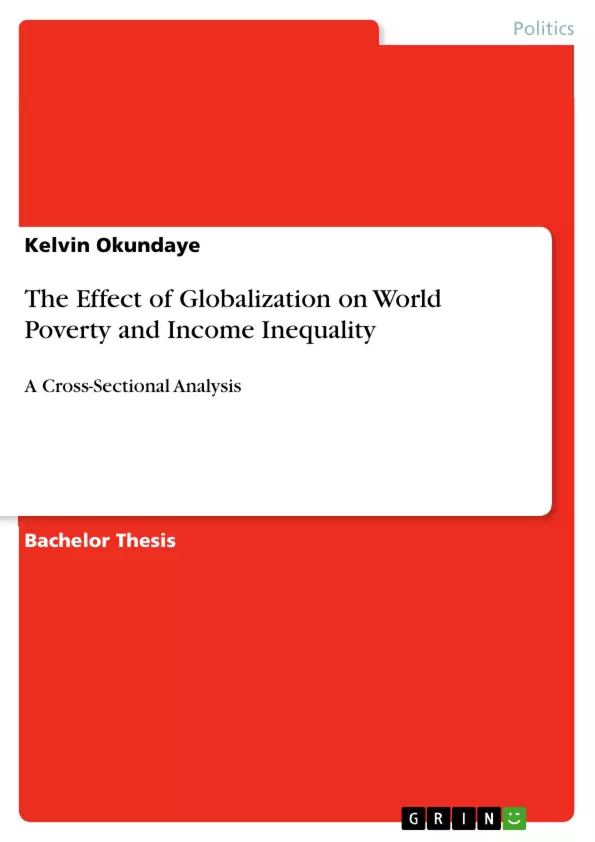In this paper, we will try to determine if any of the theoretical camps are “right” and if so, which one. We will first review current literature to clarify which arguments frame the respective pro and con attitudes towards globalization. This will include theoretical approaches as well as previous studies done in the field.
We will then empirically analyze the issue ourselves with the newest available data. To do so, we will first need to establish practicable definitions of globalization, poverty and inequality, and then try to find relation-ships between these factors. Lastly, we will interpret our results. To conclude, we will summarize our findings and discuss any limitations of our research.
Inhaltsverzeichnis (Table of Contents)
- Introduction - Divided Views on Globalization
- Theoretical Framework
- Modern or Dependent?
- Findings and Causal Mechanisms in Previous Literature
- What is Globalization? - Finding a Definition
- Explaining Poverty and Inequality
- The Research Design
- Introduction and Description of Applied Variables
- Correlation Analyses
- Limitations and Concluding Thoughts
Zielsetzung und Themenschwerpunkte (Objectives and Key Themes)
This paper aims to analyze the relationship between globalization, poverty, and income inequality, critically examining whether globalization contributes to poverty reduction or exacerbates inequality. It seeks to determine which of the contrasting theories of modernization and dependency best explains the observed trends.
- The impact of globalization on poverty and inequality
- Modernization theory vs. dependency theory
- The role of free trade and market liberalization
- The Kuznets curve and the relationship between inequality and development
- Empirical analysis of globalization, poverty, and inequality
Zusammenfassung der Kapitel (Chapter Summaries)
- Introduction - Divided Views on Globalization: This chapter introduces the central research question and outlines the debate surrounding globalization's impact on poverty and inequality. It highlights the contrasting perspectives of pro-globalizers and anti-globalizers, emphasizing the importance of understanding both sides of the argument.
- Theoretical Framework: This chapter explores two contrasting theories of development: modernization theory and dependency theory. It discusses their implications for globalization, poverty, and inequality, providing a theoretical framework for analyzing the research question.
- What is Globalization? - Finding a Definition: This chapter delves into the complexities of defining globalization and its various dimensions. It explores the concept of poverty and inequality in the context of globalization, providing a framework for understanding their interrelationships.
- The Research Design: This chapter outlines the research methodology employed in the study, including the variables used and the types of analyses conducted. It provides a detailed description of the empirical approach used to investigate the relationship between globalization, poverty, and inequality.
Schlüsselwörter (Keywords)
Key keywords and focus topics include globalization, poverty, income inequality, modernization theory, dependency theory, free trade, market liberalization, Kuznets curve, empirical analysis, cross-sectional analysis.
- Quote paper
- Kelvin Okundaye (Author), 2016, The Effect of Globalization on World Poverty and Income Inequality, Munich, GRIN Verlag, https://www.grin.com/document/414604



